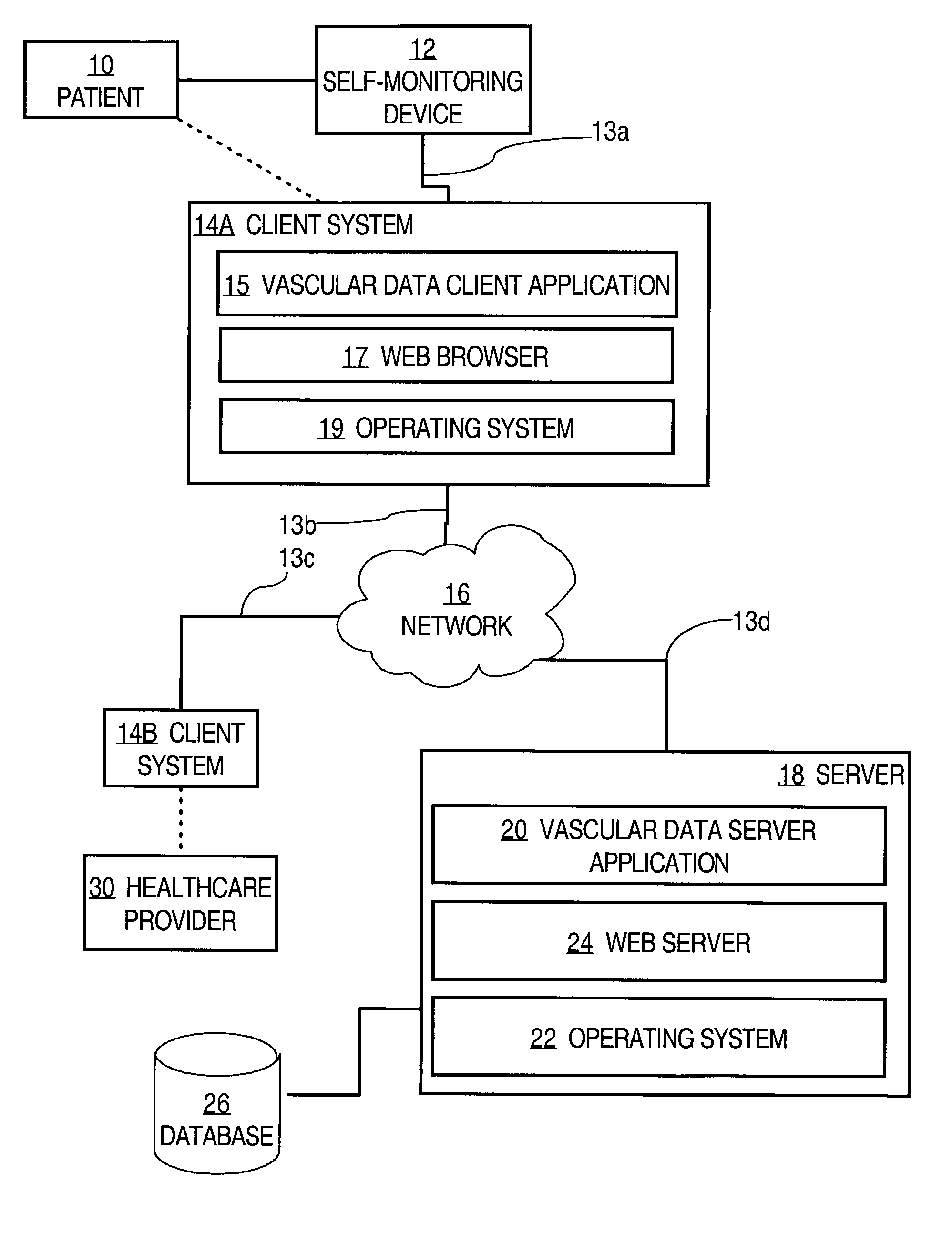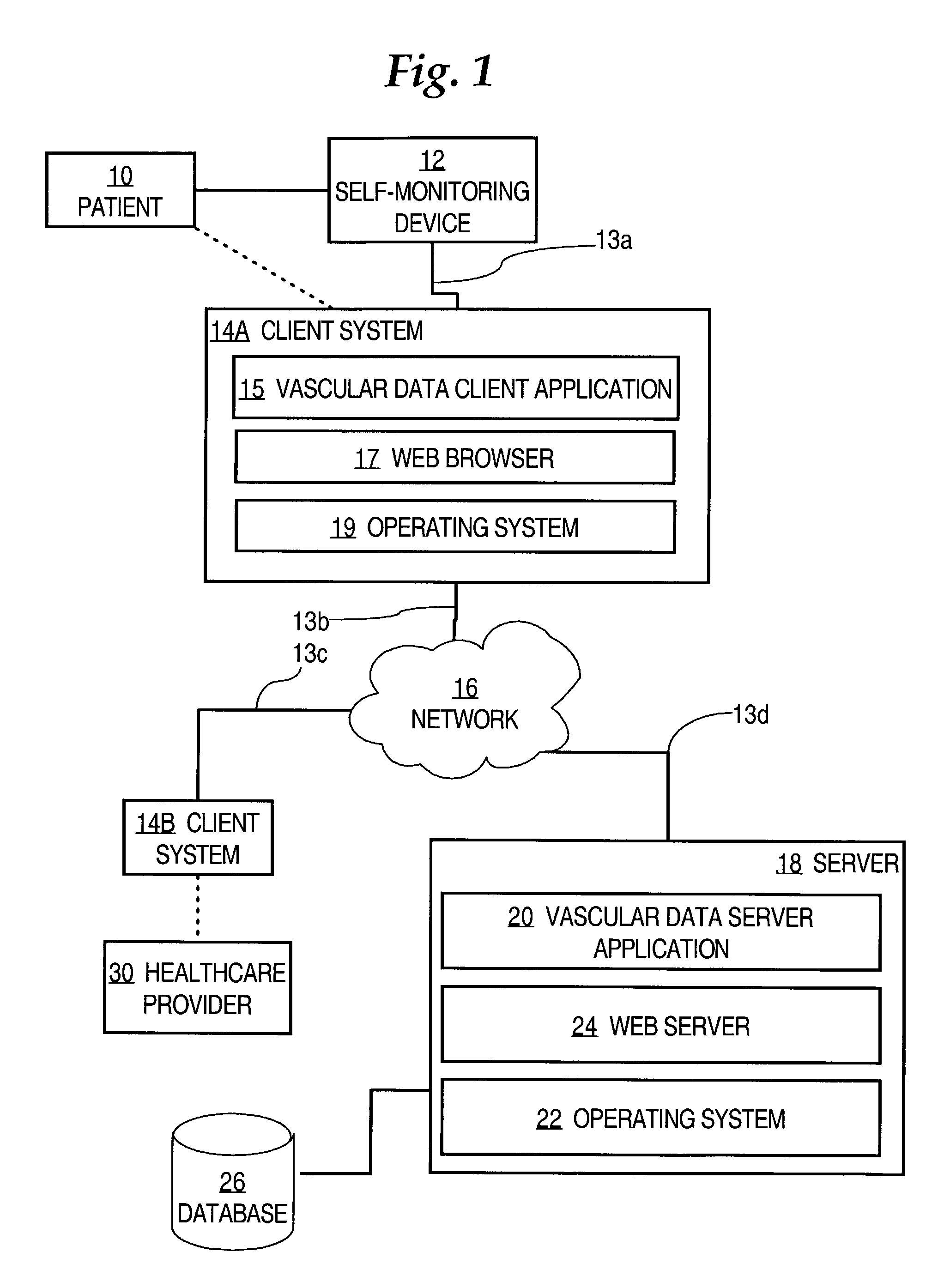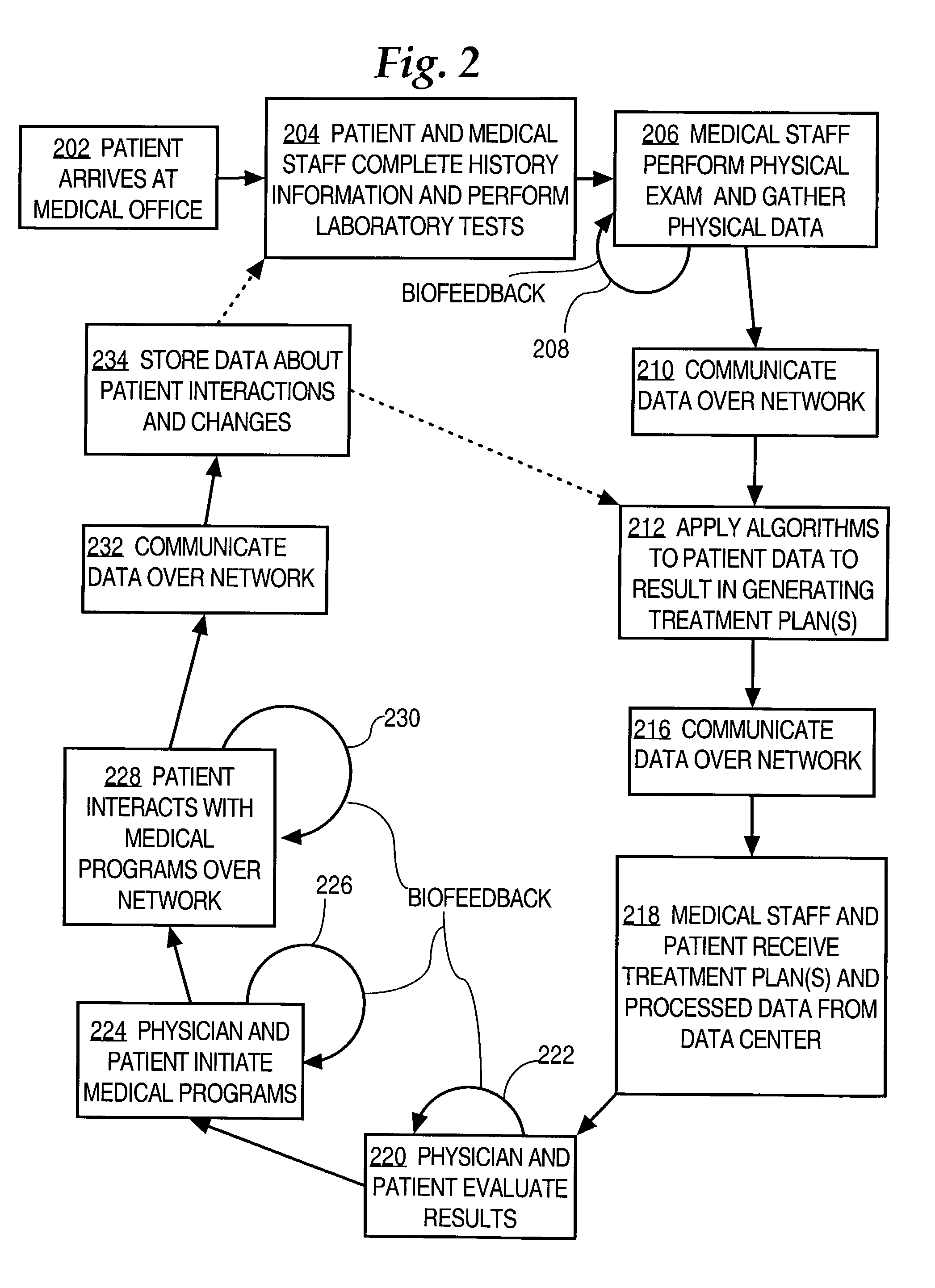Method and system for improving vascular systems in humans using biofeedback and network data communication
a vascular system and human technology, applied in the field of medical and physiological information processing systems, can solve the problems of high cost of administration, poor and the inability to use the method widely at the clinical level for evaluation of vascular diseases, etc., and achieve the effect of improving personal lifestyle choices and habits
- Summary
- Abstract
- Description
- Claims
- Application Information
AI Technical Summary
Benefits of technology
Problems solved by technology
Method used
Image
Examples
Embodiment Construction
[0037]A method and apparatus for improving treatment of vascular disease in humans using biofeedback and network data communication is described. In the following description, for the purposes of explanation, numerous specific details are set forth in order to provide a thorough understanding of the present invention. It will be apparent, however, to one skilled in the art that the present invention may be practiced without these specific details. In other instances, well-known structures and devices are shown in block diagram form in order to avoid unnecessarily obscuring the present invention.
[0038]Embodiments are described herein according to the following outline:[0039]1.0 Structural and Functional Overview[0040]2.0 Structural Details of One Embodiment[0041]2.1 Vascular Data Measurement Device[0042]2.2 Vascular Data Client Application[0043]2.3 Data Center Server Architecture[0044]3.0 Functional Details of One Embodiment[0045]3.1 Network Biofeedback Vascular Disease Treatment Met...
PUM
 Login to View More
Login to View More Abstract
Description
Claims
Application Information
 Login to View More
Login to View More - R&D
- Intellectual Property
- Life Sciences
- Materials
- Tech Scout
- Unparalleled Data Quality
- Higher Quality Content
- 60% Fewer Hallucinations
Browse by: Latest US Patents, China's latest patents, Technical Efficacy Thesaurus, Application Domain, Technology Topic, Popular Technical Reports.
© 2025 PatSnap. All rights reserved.Legal|Privacy policy|Modern Slavery Act Transparency Statement|Sitemap|About US| Contact US: help@patsnap.com



